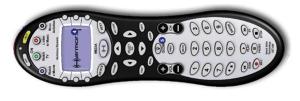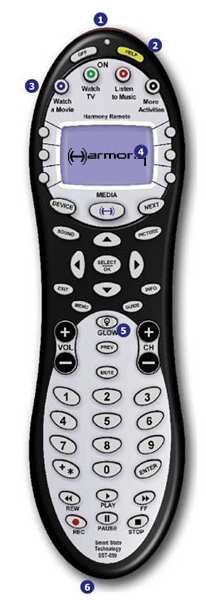|
|||||||||
|
Introduction In a review, the most important question a reader wants answered is, “Is this gizmo a good deal?” Nipping at that question's heels is a similar one, “Is this gizmo here better than that gizmo there?” Answering these two questions are what we reviewers do to keep our jobs, and many different personal anecdotes and opinions come along for the ride. Depending on where you as a reader see yourself on the grand scale of understanding dictates what kind of review you are looking for. So as a courtesy, let me say that my review takes the layman's point of view in its approach and recounts the anecdotes of a novice. I consider myself to be a ‘layman' for a number of reasons. First I don't have a deep understanding of remotes like whether they use high or low frequency infrared or the importance of a code library. Also, I've never programmed a macro in my life (except once with Excel) and would probably break something if I tried. I don't have high end components or a high-end system, wouldn't think of calling customer support except for warranty questions, and don't know the first thing about internet ‘techno-geek' user-groups. And if all this doesn't make you cringe yet, I usually don't bother reading the instruction manual. I was given the opportunity to review the Harmony SST-659 for precisely this reason, so for three months I set aside my basket of remotes and used the SST-659 from Intrigue Technologies Inc. and came to this conclusion: Is this gizmo a good deal? – YES Is this gizmo here better than that gizmo there? – YES !!!!!
The Design
The devices to which my basket of remotes correspond to include a DVD Player from Toshiba, an RCA Television, a Yamaha Receiver, a Sony CD Player, and a Digital cable box made by Motorola. Lastly, my internet connection is DSL through SBC Pacific Bell. Now you might wonder why I feel obligated to state my internet connection as part of a remote review. There is a VERY good reason and it segues into the SST-659's unique feature #1: the setup process. Harmony offers a radically different approach to programming universal remotes in that they created a software package to install on your computer and a website to maintain an account, to which the SST-659 communicates with for all the information it needs. There is no pointing the remote at the television as it cycles through an internal list of codes looking for the best fit. There is no keying in codes onto the remote for those it did not find during previous said cycle. Instead, I connected the remote to my computer via a USB port cleverly hidden on its nose ("1" on the photo at right) and sat back as the software recognize the connected remote, communicate with the thing to learn what state it was in, and then open a window on my monitor to guide me through the initial setup process. And by guide I mean it was simple: any cheeseburger could follow the steps presented and the questions asked. This method of programming has so many positive synergistic reasons going for it (a dynamic user knowledge base, a living device library, marketing, etc.) for both the user and Harmony. As a summary, the website asked what devices I wanted the SST-659 to control and what combinations of devices that I wanted active for different scenarios (like watch a movie - "3" on the photo, listen to music, watch television). From there, the software fed all the pertinent codes, macros, combinations, etc. onto the SST-659 and told me to get up and go try it. That's it. Done. No mas. The elegance of programming the
SST-659 to operate so many devices so easily doesn't stop there. That ease
couldn't be achieved if it weren't for unique feature #2: an activity based
approach. To explain this let me ask if you've ever had the following
experiences while maturing as a couch potato: Have you ever cursed at the DVD
player because you could only hear "The Matrix" through the speakers and
couldn't remove the "Friends" episode from the screen? Has your TV ever been stuck in Mute? Have you
ever used three separate remotes at once, even while all three were "Universal", because
each had a necessary function that the others couldn't replicate? This blood-pressure raising problem is simply removed when using the Harmony SST-659 because it is activity based, not device based. The buttons already affect the appropriate device based on what activity you are doing, so there's no need to mess with the devices individually. For watching a movie, your volume buttons may affect the stereo receiver while the number buttons affect the DVD player. Or to watch television, the channel buttons affect the cable box while the volume affects the TV, etc. etc. These activities were programmed during the initial setup by questions posed to me like, “When watching television do you use your stereo receiver to modify volume?” and “When watching a movie what input selection does your TV need to be on?” By answering these questions on the website, the macro combinations are created and downloaded to the remote. Since there isn't a reason to start hitting device buttons on the remote, there isn't an opportunity for that button to change when you aren't looking, and there isn't a reason to yell at your wife, and no reason for her to throw the vase of flowers at you, and no reason for you to storm out the front door. Get the picture? In Use Speaking of getting pictures, the activities are programmed, so does it really work? Well, the answer is YES with two qualifications. First, the more common your devices are, the simpler/easier/better your setup will be. And second, the usability learning curve is so steep that you quickly notice what it can't do even with its superior performance over everything else. From the initial setup, I wasn't expected to have knowledge beyond how I like activities to work and what models my devices were. The SST-659 is then programmed using a device library collected from all Harmony users. When I went into the living room to test it, I pushed the Watch TV button and both the television and cable box turned on and the television switched to channel 3. The channel, menu, and number buttons affected the cable; the volume button affected the TV; the cable switched to my favorite channel, Fox-2. All this was beautiful and worked great! Then I pushed the Menu button to look through all the channels, and found I couldn't page up and down through the menu like I used to. I could move up and down but not pag,e and it took two evenings back at the drawing board before fixing this. The reason ended up being that my model of Motorola cable box wasn't in the device library, but since other Motorolas were, it used their remote codes. Using these common codes worked fine for all the remote buttons except paging up and down, but fixing this involved a process of trial and error that took time and was a bit frustrating. It turned out that all my activities had a small function here and there that were not set correctly during the initial setup because my device wasn't that common. My CD player is old, so the Power toggle command was unknown. My DVD player is also unique so the Input toggle command for the television would get confused. These affected the Watch a Movie and Listen to Music activities. Another problem I had with the Watch a Movie activity I didn't even understand for a while, and neither the Troubleshooting guide nor the FAQ had this problem listed. What happens is my television toggles between inputs but only selects those that are active. My DVD player uses the S-Video output but takes about 4 seconds to power on, so when the command to switch to S-Video is sent to the TV, the TV doesn't recognize that it is on and incorrectly toggles to Video. There was a way to make this work but it involved manually adding time delays and another input toggle command as part of the turn-on sequence macro and isn't elegant. Heck it isn't even in most laymen's vocabulary. These issues were beyond the initial setup and weren't showstoppers in any sense. They were annoyances that were fixable but not by a ‘layman' and not quickly at all. I was still happily using only the SST-659 for all the important functions and didn't have to reach for other remotes at all. My other qualification with the positive review is the learning curve, i.e., how fast the appreciation for the SST-659 turned into an expectation for it to be able to do more. I noticed that there were six LCD menu buttons, but the activity title always took up the first two buttons, allowing only four to be modified. I was never able to figure out how to use all six. Also there wasn't an easy way to set the sequence of menu items, like wanting ‘track+' and ‘track-‘ next to each other for listening to music. It was more trial and error and often error came first. Also, beyond the initial setup, I found the website was neither clear nor intuitive. I often couldn't step back a page if I was going a wrong direction in troubleshooting or cancel a task if I realized an error. Since everything is supposed to be activity based, I was often confused whether to change a device setting or activity setting and how they would interact. For instance, getting the paging function to work for my cable menu involved changing the code on the device setting first and then changing the activity setting to use that new code. I did it backwards the first few times and subsequently erased the additional activity menu on the remote's LCD screen. Also, with my problem having the TV toggling to Video instead of S-Video, it would have worked easily if I were able to control what to turn on first, second, third, etc. during the power-on sequence. The DVD powering on first and the TV last would allow the DVD enough time to start. But that doesn't seem to be an option. Lastly I didn't like the placement of the glow button ("5" on the photo of the remote) to turn on the back light. When it would turn off, it was tough finding the button to turn it back on, especially placed in the middle of all the other buttons and the room lights off. I would have liked it as a side button, completely away from all the others and easily accessible by touch alone. Conclusions I had only small negative qualifications in an overwhelmingly positive review. Finally I'm able to say that the remote I use is "Universal" and not feel like I'm lying to myself. And since the library of devices continues to grow with every new user, hopefully the command problems I had will go away shortly.
|
|||||||||





